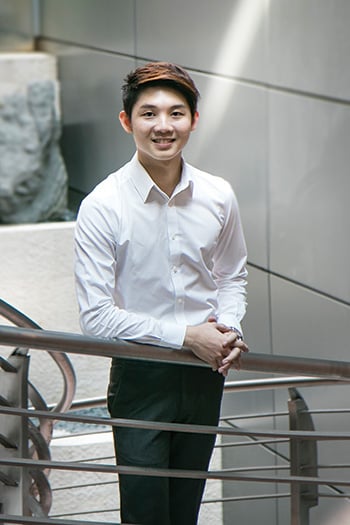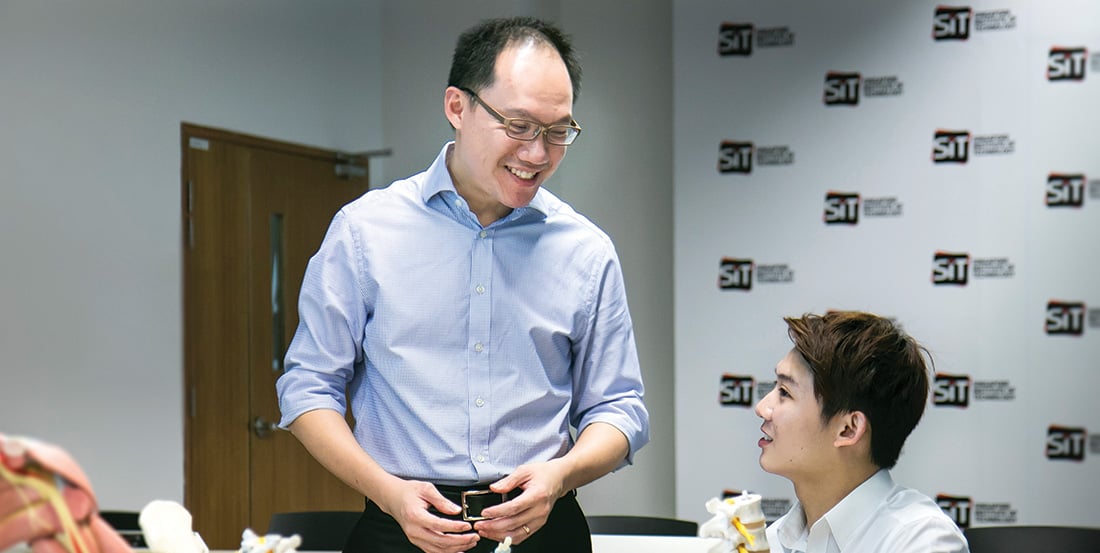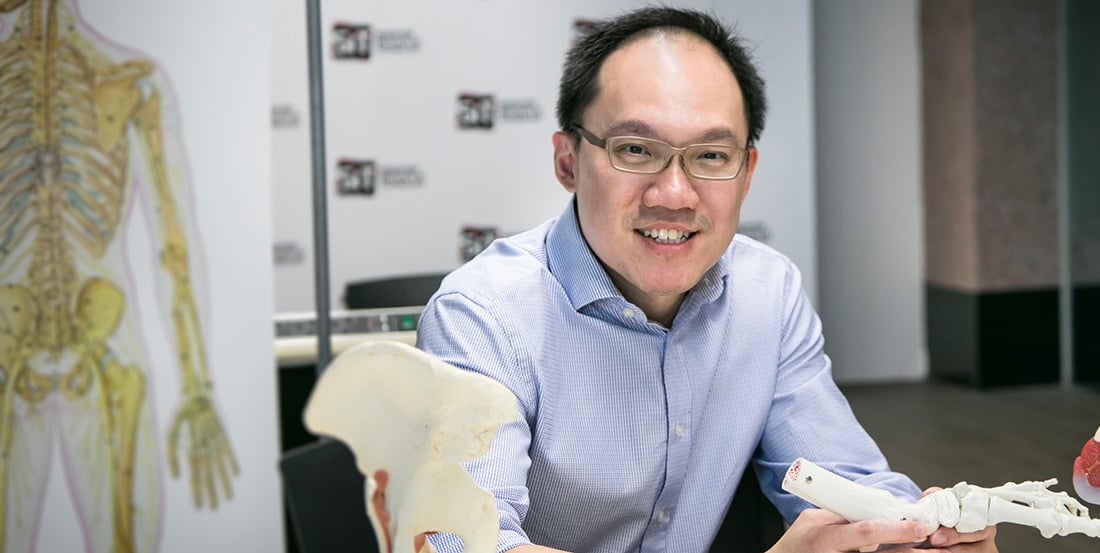As Singapore’s university of applied learning, the Singapore Institute of Technology (SIT) strives to nurture professionals with deep mastery of specialist skills so as to help industries solve increasingly complex problems. With a unique pedagogy that integrates theory with real-world scenarios, SIT’s students have the opportunity to undertake eight to twelve months of relevant work, exemplifying the best of university-industry collaboration.
An additional aim of SIT is to nurture students who would be able to contribute to national concerns. In order to meet Singapore’s healthcare needs, SIT offers various allied health degree programmes including the Bachelor of Science with Honours in Diagnostic Radiography. To find out more about this degree programme, we speak to first-year student Ang Xu Kai and Assistant Professor Eric Chua, Programme Director, Diagnostic Radiography and Radiation Therapy to find out more.
What makes SIT’s Diagnostic Radiography degree programme stand out?
Ang Xu Kai: When I was exploring the different university choices, SIT was one of the institutes that caught my attention because of its programme. After conducting research, I found out that the teaching approach at SIT differs from more traditional universities. Academic theory is only part of the focus; the curriculum is also partly managed and conducted by industry experts in their respective fields. This provides a practical aspect which is extremely beneficial to understanding the needs of the current industry.
Eric Chua: SIT’s degree in Diagnostic Radiography is a four-year, direct honours degree programme. It is the only such programme among the autonomous universities in Singapore. Apart from academic modules, the programme also features ten months of comprehensive clinical practice at imaging centres to prepare graduates for their future role as professional radiographers.

Ang Xu Kai
Student, Year One
Healthcare Merit Award with MOH Holdings Pte Ltd
Bachelor of Science with Honours in Diagnostic Radiography
Singapore Institute of Technology
Share with us about the programme’s delivery.
Xu Kai: SIT aims to develop students’ critical thinking skills by providing us with practical scenarios to apply our existing knowledge. Rote learning is minimal with most of the curriculum anchored on linking concepts and thinking out of the box to propose solutions to problems. Certain subjects, such as Anatomy and Physiology, are delivered in collaboration with NUS to enrich our learning, allowing us to better link theory with real-life scenarios.
Eric: Student radiographers undertake supervised clinical practice in actual imaging centres from their first year onwards, and it is highly integrated with the academic modules. Students are prepared for such clinical practice through practical sessions at actual imaging centres. Other pedagogical methods include simulation training, case-based learning and objective structured clinical examinations.
How does SIT prepare its students for the workforce?
Xu Kai: At SIT, the focus is placed on active learning. This has inculcated in me the habit to do my own readings, which is essential in keeping my knowledge up-to-date. This is also beneficial as I work towards my future goal of becoming a professor, which requires earning a doctorate. Constant self-improvement is needed in order to teach the most updated practices. Students are also exposed to critical literature appraisal, which allows us to grasp theories much faster. The ability to properly critique a paper is also important for educators in both academia and clinical settings.
Eric: Student radiographers will first and foremost graduate with the necessary clinical competency to become professional radiographers. The education at SIT also focuses on critical professional skills including communication, inter-professional collaboration, and evidence-informed practice. In addition, elements of the SIT-DNA are embedded throughout the curriculum, shaping graduates who are thinking tinkerers, able to learn, unlearn and re-learn, to be catalysts for transformation, while remaining grounded in the community.

Assistant Professor Eric Chua (Left)
Programme Director
Diagnostic Radiography and Radiation Therapy
Singapore Institute of Technology
Give us an idea of the kind of culture nurtured between students and their professors.
Xu Kai: The relationship between professors and students in SIT is that of colleagues. Being a student for so many years, this is the first time that such a mutual relationship has been established and I find it interesting. The professors come from varied backgrounds in academia and industry, and all of them have undergone clinical work. This enables them to contextualise information during lessons, which benefits students before we began our clinical practice. The professors are also willing to go the extra mile to help the students with our learning.
Eric: The culture between students and the faculty team is one of partnership. The student body actively engages the faculty and administrators, working together to create an enriching learning environment for students to grow professionally and to realise their full potential.
What advice do you have for those considering enrolling in SIT’s health sciences programmes?
Xu Kai: My advice to all would be to simply follow your heart. Do what you feel is reflective of your goal in life, and never let that passion for something die out because of some external influence over your decision. Know where your true passion lies. In healthcare professions, it is passion that will motivate you to be involved in lifelong learning and how you are able to provide the best care that patients need. If you wish to be part of the healthcare team that brings smiles to people, this is the place to be!
Eric: SIT’s Diagnostic Radiography degree programme is geared towards training professional diagnostic radiographers to meet future healthcare needs. We encourage prospective students to explore and consider a career in diagnostic radiography, and we look forward to welcoming those with a passion for diagnostic radiography to join our degree programme. There is also a variety of scholarship opportunities to support university education in this area.

